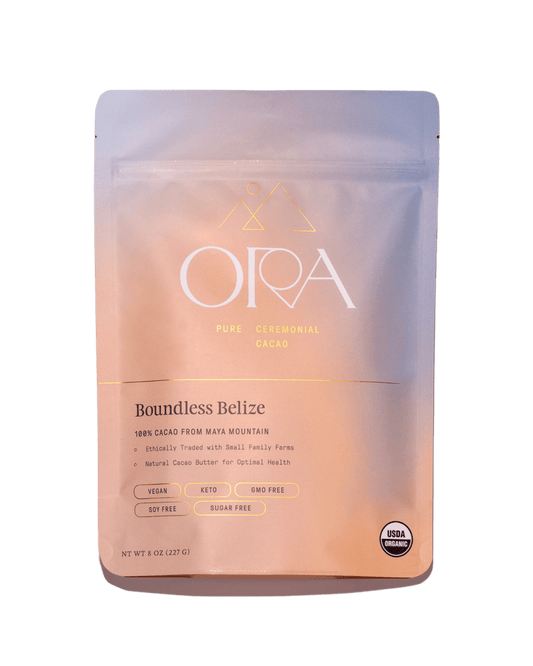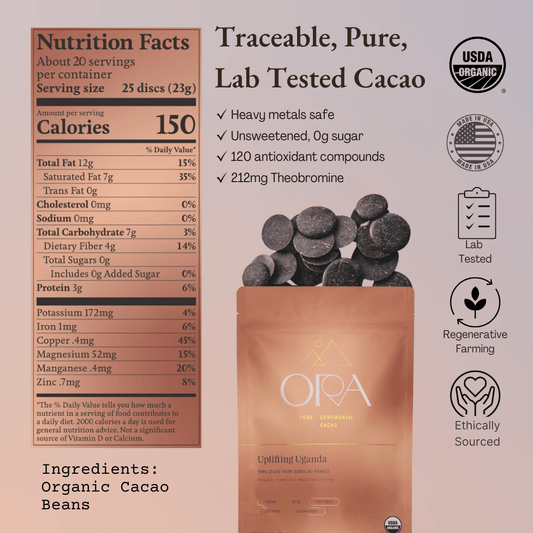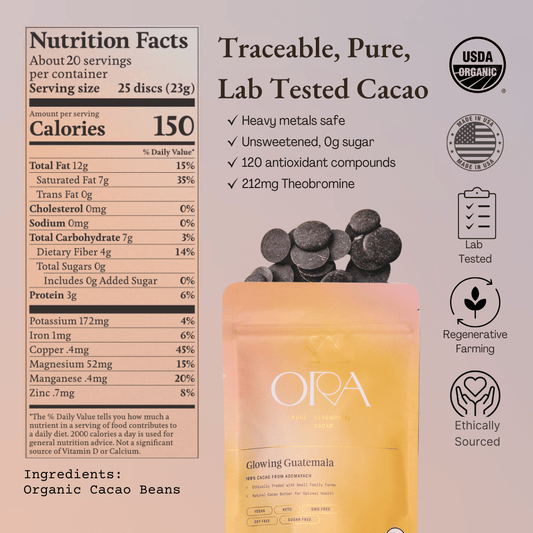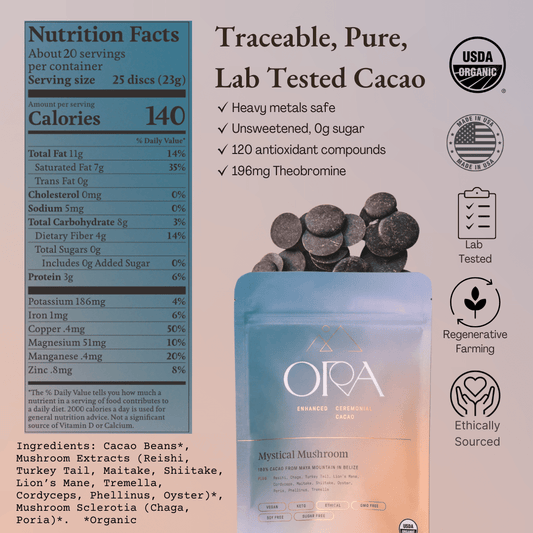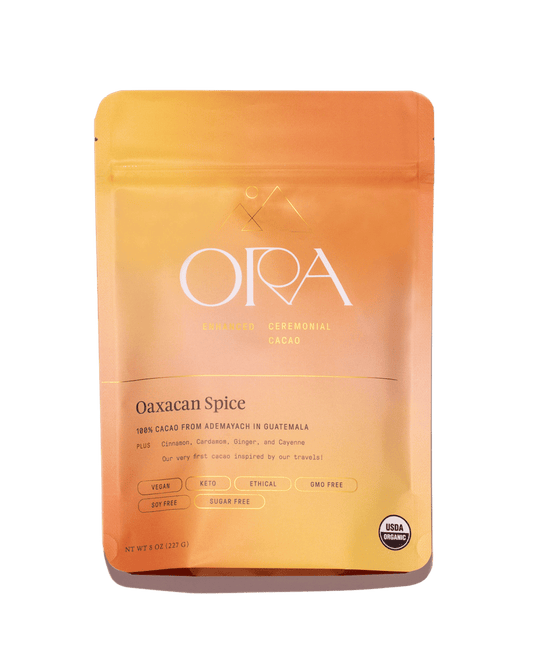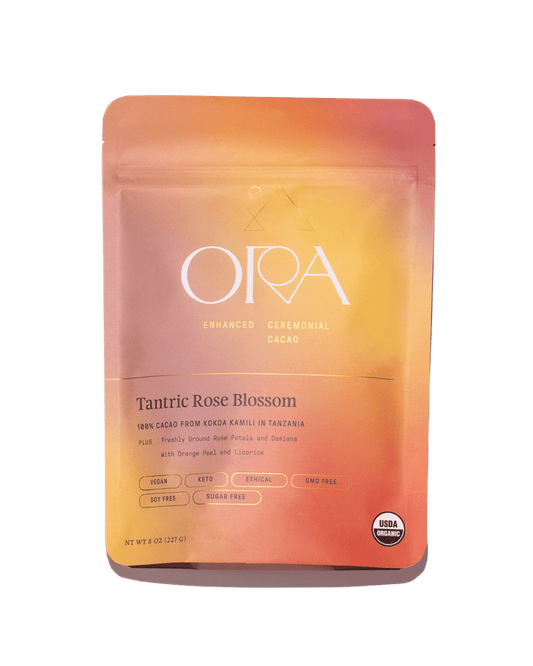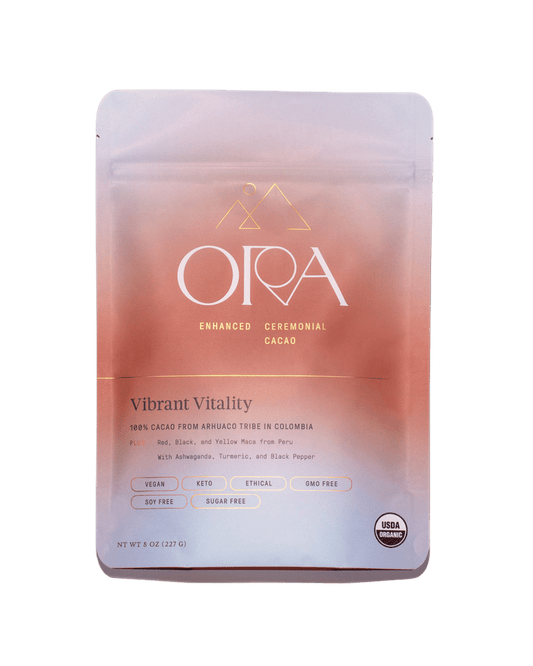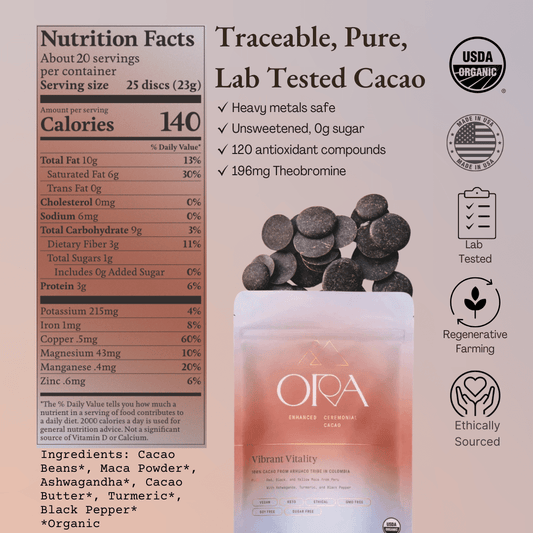Last week we invited everyone to ask us anything about cacao and we received some truly wonderful questions.
If you missed it, you can click here to submit your cacao question anonymously!
Today, we’re doing a deep dive into one of the most triggering topics around cacao ceremony that you are sure to encounter at some point in your relationship with cacao.
Question:
"I’m seeing some accounts saying I have no right to use cacao or to call it a ceremony, and I’m curious how to navigate this gray area respectfully."
Answer:
As cacao ceremony practitioners and facilitators, navigating concerns about cultural appropriation is of utmost importance. To begin, we’d like to offer the following framework for what cultural appropriation is, that we’ve found very helpful:
Cultural appropriation is the use of elements of another’s cultural heritage without permission, context, knowledge, or giving back.
If any of these elements are missing, yes, you may be culturally appropriating, even if you are coming with good intent. But we are here to support you in all of these areas.
When a person comes to you telling you that you don’t have the right to work with cacao due to cultural appropriation concerns, we invite you first to get grounded in your breathing and your body, because it can feel like a personal attack and it can elevate your nervous system.
We encourage you to listen with compassion and curiosity. Bring all the compassion you can: the rage or anger in a confrontation about cultural appropriation is likely seated in trauma and loss. Sometimes these conversations, if you choose to engage respectfully, can turn into really beautiful learning moments.
So, take an honest inventory: Do you have permission to work with cacao? Do you have context and knowledge of the cultures it comes from? How do you give back? We’ll dive into each of these now, beginning with knowledge as this leads into context, permission, and giving back.
Diving Into Serving with Integrity

Knowledge: Do you have a clear understanding of the history of the colonization of cacao and native peoples of this planet? Specifically, native peoples of the Americas? If you don’t, perhaps it is not time yet to serve groups, and you can continue strengthening your own practice as you learn more about indigenous people’s histories. We recommend reading Open Veins of Latin America: Five Centuries of the Pillage of a Continent by Eduardo Galleano for a deeply humbling orientation and a history that we believe is missing from many of our school systems.
When you are grounded in knowledge, you can bring that into your cacao ceremonies. We recommend always including acknowledgment of the people and land the cacao comes from that you are drinking. The more detail, the better. Learn about each cacao that you work with and where it comes from. The same goes for mentioning the history and impacts of colonization when you serve cacao. Bringing the topic of colonization into your ceremonies before someone asks you demonstrates your willingness to engage with the topic. It brings this awareness to your communities, invites dialogue about decolonizing plant medicine, and helps participants consider the complexity that comes with receiving plant medicine in this day and age.
Context: Ceremony is a universal practice that is used throughout many traditions. However, it is important to understand that the cacao ceremonies we practice today are not what was practiced in the past, and modern-day cacao ceremonies are a recent invention. Many people living modern Western lives are now seeking new ways of healing because the way in which our society has been living has shortcomings. This is a good thing when it comes to cultural appropriation, as we are not trying to emulate a cultural ritual from another time and place, rather we are trying to connect with cacao in a way that is suited to our present-day situation. What we do have in common with ancient cultures that worked with cacao is a genuine, heartfelt desire to connect with, to be guided by, and to learn from cacao.
It is important to understand that the word “ceremony” can be triggering to others because of the intense history of colonization. You can be clear about the fact that what you’re sharing is not coming from a direct lineage, or name your gathering something different than a cacao “ceremony,” for example, “Cacao Meditation” or “Cacao Circle.”
Permission: In our eyes, particularly because cacao ceremony is a modern phenomenon, permission to work with cacao comes directly from asking the plant and being integrous with the guidance you receive. When you have a clear and grounded understanding of your own personal practice with cacao, you can begin inquiring how to lead others in their connection with cacao. In your own cacao ceremony, you can ask cacao:
- Do I have permission to share you in ceremony?
- How many people is it appropriate for me to lead?
- What have I not learned yet that I need to know to serve cacao in a good way?
When you have confidence in your own personal practices, no one can take that away from you, as fundamentally, this knowledge and permission come from cacao. Remember, plants do not concern themselves with race. The color of your skin or your ancestral background does not qualify or disqualify you from connecting with plant medicines.
Giving Back: Sourcing your ceremonial cacao in a good way is an essential part of giving back. There are many options out there, some just looking to capitalize on the ceremonial cacao movement. Find the people who are most knowledgeable and with a strong connection to cacao. Look beneath the marketing to feel the heart in the cacao you are serving, and see if you resonate with the vision the people you source cacao from are working towards. For cacao to be medicine for people, the process of sourcing it must also be medicine for the Earth and all the lives it touches along the way. It must do far more than have no impact, it must regenerate ecosystems and communities.
Reciprocity also takes place in the form of gratitude. Gratitude is an essential part of ceremony, and a way that we feed the heart of cacao when we receive from it. It is an essential part of reversing centuries of soul-less commodification of sacred plants such as cacao. Coming to cacao with gratitude is the foundation for a healthy relationship.
Lastly, become an ally of indigenous land rights, self-governance, and resistance to colonization. Whether that is in your own community or in places such as the Amazon, there is an immense amount of inspiring indigenous-led organizing happening to protect waterways, forests, and the many species that depend on them. Show solidarity by educating yourself, donating financially, and offering your time.

As a community that loves cacao, we are all in this together. Around the world, many people are doing the best they can to commune with sacred plants such as cacao in a loving and honorable way. We honestly find the conversation about cultural appropriation a welcome one because it holds us all accountable to sharing cacao in a good way. So when you encounter this topic, we invite you to lean in.
When we show up as facilitators that are well educated, we can be part of a movement that is doing incredible good, offering healing to people, opening hearts, and supporting indigenous communities to protect, preserve, and keep alive ancient cacao traditions.
With love and respect for the Spirit Of Cacao and all of Earth’s medicines,
Jonas & The Ora Cacao Family



